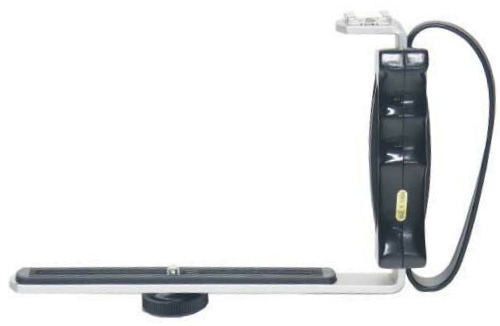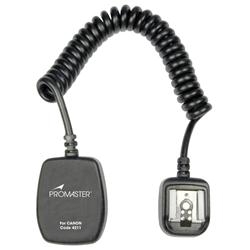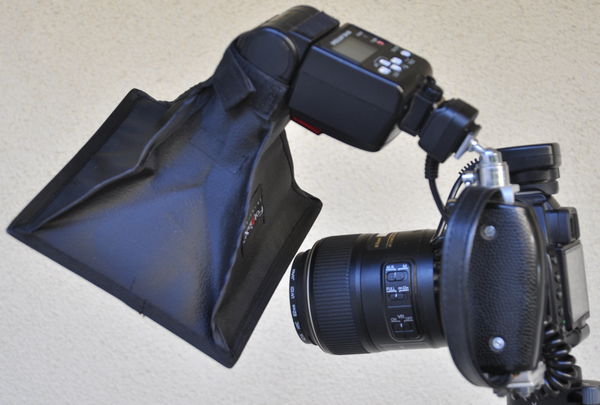More Gear?
Aug 2, 2014 16:25:13 #
I have been enjoying my D600 for the last year or so. When I purchased the camera I also bought a 28-300mm Nikon zoom which I really like as a walk-around-lens and an SB-400 flash for a little more light than the on-camera flash. For most shooting this is fine.
Where I live days are often overcast and the daylight hours are short a good part of the year. What I am finding is when I shoot indoors, my lens is so slow that I usually have to use my flash. The range of this flash is limited when the subject area is further away and I can't get it all in frame.
I am thinking this may be the time to pick up a fast prime lens (85mm or 105mm) or a larger flash unit or both.
Any suggestions....
Where I live days are often overcast and the daylight hours are short a good part of the year. What I am finding is when I shoot indoors, my lens is so slow that I usually have to use my flash. The range of this flash is limited when the subject area is further away and I can't get it all in frame.
I am thinking this may be the time to pick up a fast prime lens (85mm or 105mm) or a larger flash unit or both.
Any suggestions....
Aug 2, 2014 16:34:07 #
I also have a D600 and I opted for the SB700 flash. I felt the 400 was underpowered for the D600. The SB700 has a higher guide number and it'll throw the light farther and has more bounce capability. It also has a built in bounce card and defuser lens cover.
I'm also using the 24-85mmVR that came with it. It is quite crisp. If I need to go longer the 70-300mmVR does the job. I had a 50mm1.8G prime and sold it because I felt the 24-85 was "that" good. Todays zooms are getting really clear.
I'm also using the 24-85mmVR that came with it. It is quite crisp. If I need to go longer the 70-300mmVR does the job. I had a 50mm1.8G prime and sold it because I felt the 24-85 was "that" good. Todays zooms are getting really clear.
Aug 2, 2014 17:03:42 #
Day, I second the SB700 flash. Would recommend you also get a L-Bracket (Kalt makes a good one for under $30) and 18" flash cord so the flash is not sitting on top of your D600. ;)
Aug 2, 2014 19:28:55 #
Db7423 wrote:
Popular combination.Day, I second the SB700 flash. Would recommend you also get a L-Bracket (Kalt makes a good one for under $30) and 18" flash cord so the flash is not sitting on top of your D600. ;)
Kalt L-Grip Flash Bracket

Typical TTL Off-Camera HotShoe Cord

Kalt L-grip bracket, SB-600 speedlight, & TTL sync cord for macro set-up

Aug 2, 2014 20:07:05 #
Nikonian72 wrote:
Popular combination.
You mentioned it often enough I bought one. Now we have two us promoting this great bracket! :) ;)
Aug 2, 2014 22:46:05 #
Nikon_DonB wrote:
I also have a D600 and I opted for the SB700 flash... (show quote)
Thank you for the advice, Don. I was leaning toward a faster lens for inside shooting with the smaller SB400 flash. Perhaps I had it backwards.
Aug 2, 2014 22:55:30 #
Db7423 wrote:
Day, I second the SB700 flash. Would recommend you also get a L-Bracket (Kalt makes a good one for under $30) and 18" flash cord so the flash is not sitting on top of your D600. ;)
Thank you. It seems the more powerful flash is the way to move next. What is the advantage to the L-bracket? I usually only see them used (here) by professional photographers.
Aug 2, 2014 23:19:06 #
Your flash unit has limited output. Two things. One buy a more powerful flash unit. Two, learn how to use it to best effect and for beautiful flash lighting.
These two Web-sites can help you learn flash lighting:
http://neilvn.com/tangents/flash-photography-techniques/
http://strobist.blogspot.com/2006/03/lighting-101.html
The use of flash lighting opens more photographic opportunities. Its use also gives you the cameraman more control over lighting.
I must say, though, I found the learning curve for flash lighting somewhat daunting yet more than worth it.
Let me give you a concept that once put to use will clarify the understanding of flash lighting.
Apart from studio lighting, an exposure using flash lighting involves two parts that happen separately and in sequence.
First, the flash lighting occurs at the beginning of the exposure period, then ends.
Second, the rest of the exposure occurs only from the ambient lighting.
There you have it.
In practice, this approach involves first setting the exposure for the ambient lighting -- with the flash unit set to off.
Next, turn on the flash unit and set its power level via a dial on the unit or via a camera menu to the setting that adds just enough flash lighting.
You strive for balancing the flash lighting with the ambient lighting. So you will find yourself adjusting the ambient exposure and the flash lighting exposure until you have the overall lighting effect you like.
The general rule for use of flash lighting involves using it as fill lighting -- meaning it adds to the existing (ambient) lighting. We might call this the second concept.
Anyway, let the two experts above steer you further to the understanding and use flash lighting.
Good luck.
These two Web-sites can help you learn flash lighting:
http://neilvn.com/tangents/flash-photography-techniques/
http://strobist.blogspot.com/2006/03/lighting-101.html
The use of flash lighting opens more photographic opportunities. Its use also gives you the cameraman more control over lighting.
I must say, though, I found the learning curve for flash lighting somewhat daunting yet more than worth it.
Let me give you a concept that once put to use will clarify the understanding of flash lighting.
Apart from studio lighting, an exposure using flash lighting involves two parts that happen separately and in sequence.
First, the flash lighting occurs at the beginning of the exposure period, then ends.
Second, the rest of the exposure occurs only from the ambient lighting.
There you have it.
In practice, this approach involves first setting the exposure for the ambient lighting -- with the flash unit set to off.
Next, turn on the flash unit and set its power level via a dial on the unit or via a camera menu to the setting that adds just enough flash lighting.
You strive for balancing the flash lighting with the ambient lighting. So you will find yourself adjusting the ambient exposure and the flash lighting exposure until you have the overall lighting effect you like.
The general rule for use of flash lighting involves using it as fill lighting -- meaning it adds to the existing (ambient) lighting. We might call this the second concept.
Anyway, let the two experts above steer you further to the understanding and use flash lighting.
Good luck.
Day.Old.Pizza wrote:
I have been enjoying my D600 for the last year or ... (show quote)
Aug 3, 2014 02:53:10 #
Day.Old.Pizza wrote:
Most of the field macro-photographers on UHH use one L-grip bracket or another. NONE of us are professional photographers.What is the advantage to the L-bracket? I usually only see them used (here) by professional photographers.
Aug 3, 2014 03:10:51 #
amehta
Loc: Boston
Day.Old.Pizza wrote:
I have been enjoying my D600 for the last year or ... (show quote)
If you look through your pictures, can you get a sense of what focal lengths you use most often where you need more light? If it is around 35mm, 50mm, or 85mm, there are Nikon f/1.8G lenses for $600, $200, and $500 respectively. If you want to spend more money, f/1.4G options are available in all three focal lengths, as well as 24mm.
If you want to go the route of a more powerful flash, any of the SB910, SB900, SB800, SB700, or SB600 would qualify, though I might lean towards the first three.
Aug 3, 2014 07:46:30 #
Day.Old.Pizza wrote:
Thank you. It seems the more powerful flash is the way to move next. What is the advantage to the L-bracket? I usually only see them used (here) by professional photographers.
First, I really don't want a big flash flopping around on the hot shoe and it makes the camera/lens feel unbalanced to me. Second, lighting is better when not on the same plane as the lens. Third, it is much easier moving around with the bracket grip than holding the camera in the regular way with the flash mounted on the hot shoe. ;)
Aug 3, 2014 08:35:19 #
Nikonian72 wrote:
Most of the field macro-photographers on UHH use one L-grip bracket or another. NONE of us are professional photographers.
Thanks, Nikonian72. I got the impression from the response about using an L-bracket, that an off-camera flash mounting was better for normal use, and perhaps it is. I was only commenting that in my limited experience, the only people I saw using L-brackets were professional photographers at weddings.
Aug 3, 2014 08:39:51 #
Thank you! I have much to learn about using a flash properly. I will definitely look through the links you provided.
anotherview wrote:
Your flash unit has limited output. Two things. ... (show quote)
If you want to reply, then register here. Registration is free and your account is created instantly, so you can post right away.




